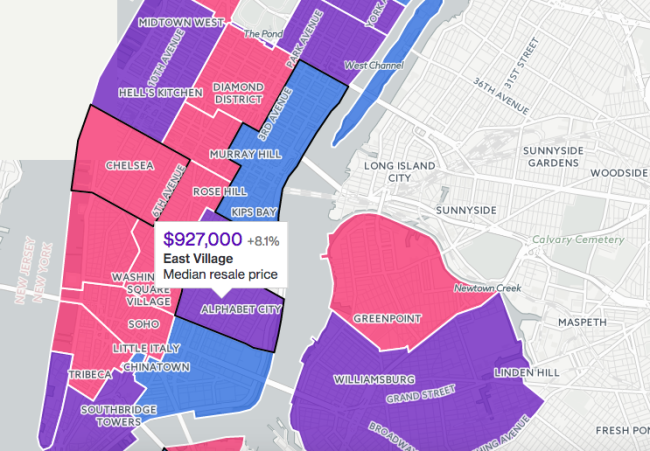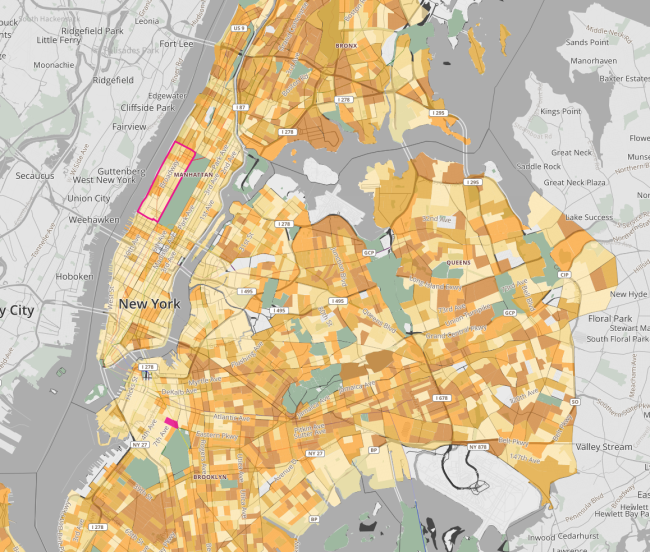Map: Find the median rent of a one-bedroom near your NYC subway stop (and how much it's gone up in the last year)
It's no secret that your proximity to a desirable subway stop or line can have a dramatic effect on how much rent you pay. (See: the steady upward march of prices along the L line in north Brooklyn, and the expected spike in rentals along the newly-opened Second Avenue subway stops.)
But for a close study into prices in your neighborhood (and by your preferred commuter hub), RentHop has released its 2017 Subway Rent Map, tracking the median rents at each subway stop in Manhattan, Brooklyn, Queens, and the Bronx, as well as the amount they've gone up or down in the past year. (RentHop used the prices of one-bedrooms from their own rental data to crunch the numbers, and looked at non-duplicated listings within 1/8th of a mile of each stop.)
You can toggle around with the map below to see the prices in your area, and how your current rent compares:
While some subway stops inevitably saw major price hikes in the last year—prices near the Q at Parkside rose 25.8 percent year-over-year, and by the Halsey J, 24.7 percent—the map also reveals some prime opportunities for savings, with areas that see a significant price decline if you move one subway stop further. One particularly dramatic example: On the 1 train, the median one-bedroom rent at 116th Street is $2,948, but head up to 125th Street, and it drops down to $2,125, a difference of $823.
"I think the main reason for large drops in price between single stops comes from being on the edge of a neighborhood or close to where development is currently expanding," RentHop data scientist Shane Leese tells us. "For that case in particular, living near Columbia University at 116th commands a higher rent than living both at 125th and at 110th."
Similarly, the median at the Church Avenue F/G in Brooklyn is $2,950, but head to Ditmas Avenue, which is only serviced by the F, and the price drops down to $1,725. "Stops near landmarks, or areas that are experiencing a wave of gentrification or development, will show a stark contract to stops around them," says Leese. "Subway stops further from hubs/junctions also see a quick price drop-off."
While we've written previously that you won't necessarily pay more to live off an express stop, there's no denying that when it comes to rental prices, your subway proximity is nearly as important to the price as the apartment itself.
You Might Also Like






























